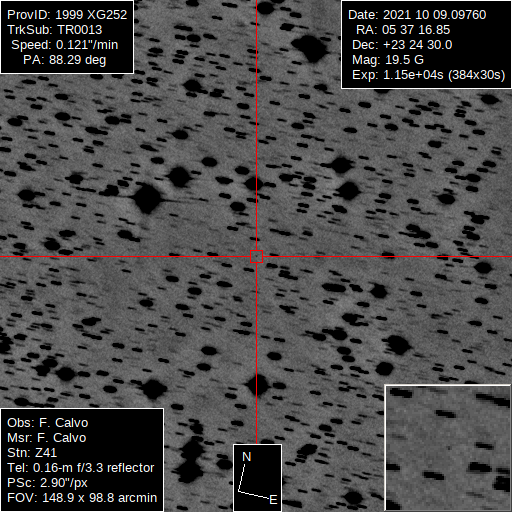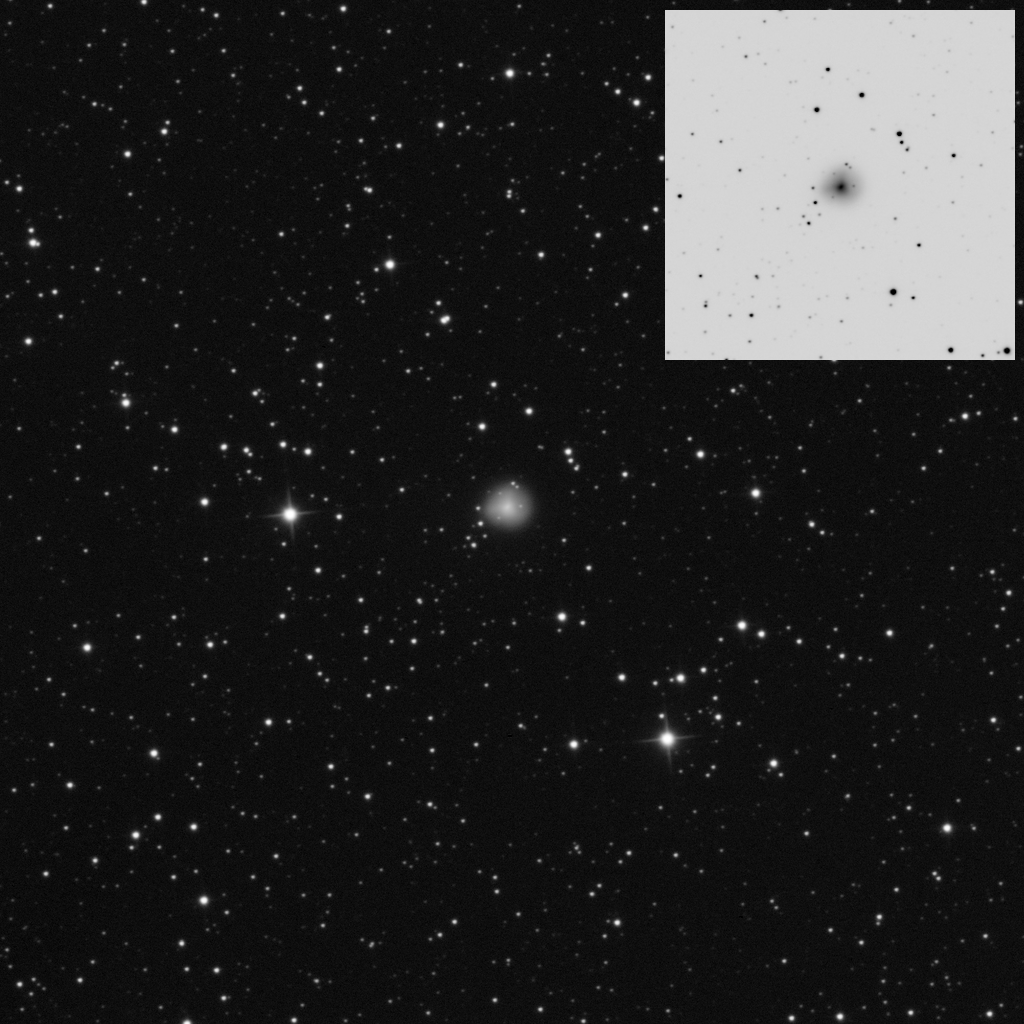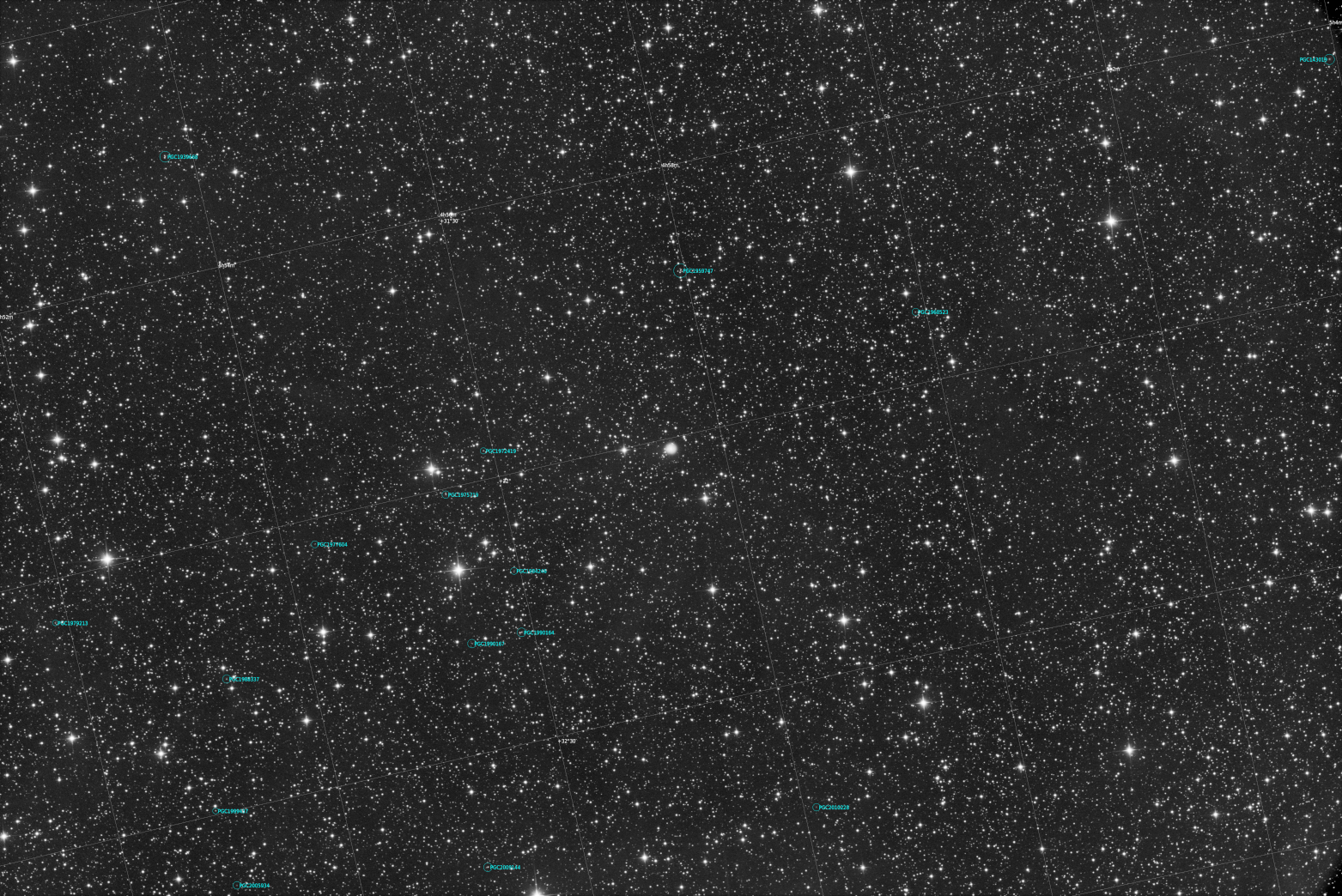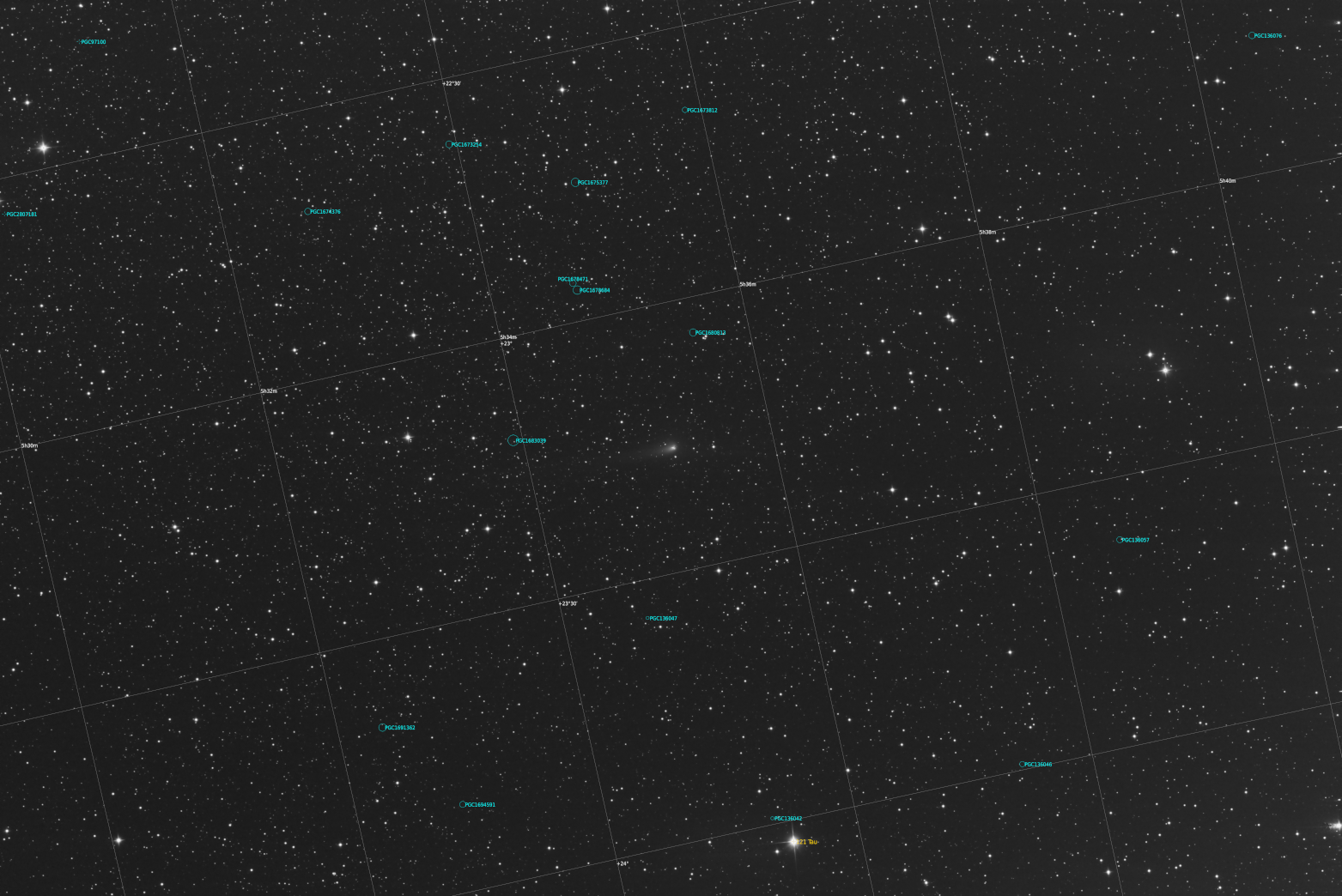29P_69P
These days we have focused on two comets that are showing some activity.
The first and most active, is the so-called P/29 Schwassmann-Wachmann, which has had a recent outburst, going from magnitude 16 to 12, and the second is the P/69 Churyumov-Gerasimenko that, although it has not had any outburst, it begins to approach us progressively.
The image below is a 30-minute shot, if we look closely, we can see the three emission lines starting from the nucleus. You can click to see the full image, within a field of 2.5x1.6 degrees:
Let's see an animation; if you look closely you can see the jet streams activated:
But if we analyze it more carefully, the obtained field is really rich in objects; we can find at least 15 galaxies classified in the PGC catalog and quite a few more without being classified:
In addition, 15 other minor solar system bodies, all numbered, were visible at the time of capture. As an example, we selected 1999 VU11:
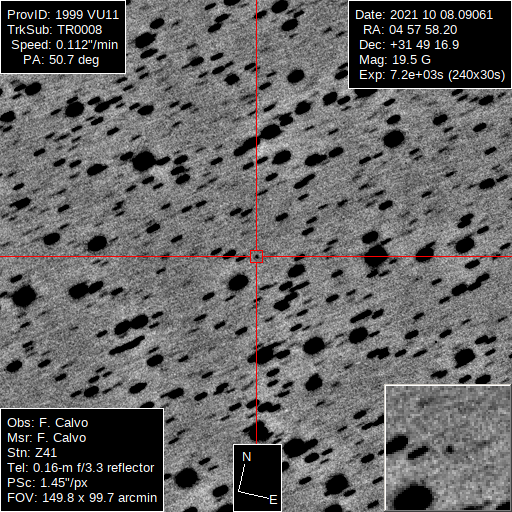
The second comet we have worked on has been the so-called P/67 Churyumov-Gerasimenko; it has not had any outburst so far, but it is starting to be visible on the way to its Earth approach. We show a 4-hour artistic integration, processed in PixInsight:
 .
.
Let's see an animation of the 4 hours of tracking:
As with P/29, the field is very rich in objects, locating at least 17 galaxies from the PGC catalog:
And no less than 47 asteroids, we show some of them:
